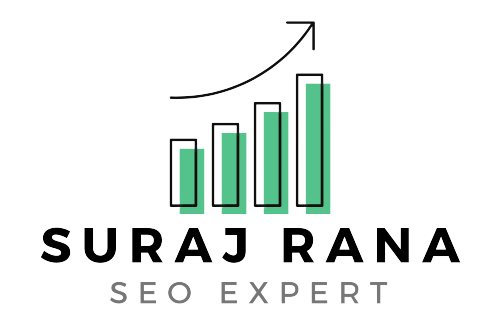When it comes to building a website for your dental practice, making the right choice can be overwhelming. Two popular platforms, WordPress and Webflow, offer different features and benefits that can impact your site’s success—especially when it comes to SEO and building trust with patients through EEAT signals (Expertise, Authoritativeness, Trustworthiness).
But which one is better for helping your dental clinic rank higher on Google and connect with more local patients? In this article, we’ll break down both platforms in simple terms, so you can easily understand which option best fits your needs and helps your practice grow online.
WordPress Vs Webflow Focusing on Dental SEO and EEAT signals
Here’s the updated comparison table between Webflow and WordPress, focusing on Dental SEO and EEAT signals (Expertise, Authoritativeness, Trustworthiness) without the backlink and off-page section, with a new section replacing it.
| Criteria | WordPress | Webflow | Impact on Dental SEO & EEAT Signals |
|---|---|---|---|
| SEO Customization | Full control over SEO with plugins like Yoast SEO and Rank Math. You can edit meta tags, URLs, schema markup, and more. | Built-in SEO tools allow for easy control over meta tags, alt texts, and URL structures without plugins. | Both platforms offer great SEO control. WordPress provides more flexibility via plugins, while Webflow’s built-in tools offer simpler, code-free management, useful for dentists managing SEO without advanced technical skills. |
| URL Structure | Clean, fully customizable URLs, allowing for keyword optimization. Users can organize URLs with advanced permalink settings. | Allows custom URL structures and clean, SEO-friendly URLs out of the box. No need for additional plugins or coding. | Clean URLs are crucial for dental clinics targeting local keywords (e.g., “Pediatric Dentist in [City]”). Both platforms support this feature, which is important for local SEO. |
| Speed and Performance | Dependent on hosting and optimization. Can be highly optimized with caching plugins, CDNs, and other tools. | Known for superior speed out-of-the-box with automatic CDN integration and cleaner code, making it faster without additional optimization. | Webflow may have an edge in performance, as speed is crucial for dental websites to improve user experience and Trustworthiness in EEAT, which in turn helps with SEO rankings. |
| Schema Markup | Plugins like Schema Pro allow users to add various schema types (e.g., dentist schema, local business schema) to improve search visibility. | Schema can be added manually or via custom code, but it’s less accessible for beginners compared to WordPress plugins. | WordPress makes adding dental-specific schema easier through plugins, enhancing local SEO and EEAT. Webflow allows custom schema but requires manual implementation, which may be more complex for dental practices. |
| Mobile Optimization | Mobile optimization through responsive themes and plugins. Requires testing to ensure responsiveness. | Automatically optimized for mobile with responsive design built-in. Webflow’s visual editor makes testing mobile layouts easy. | Both platforms ensure mobile optimization, crucial for dental SEO as many patients search for dental services on mobile. Webflow’s automatic optimization may offer a slight advantage for ease of use. |
| Plugins and Extensions | Thousands of plugins available for SEO, security, and performance, providing more advanced options for SEO customization. | No plugins are necessary; all functionality is built into Webflow, which reduces the potential for plugin conflicts and simplifies site management. | WordPress offers a broader range of dental-specific SEO tools, but Webflow’s simplicity can help dentists manage their site without worrying about updates or conflicts, aiding in smoother maintenance. |
| Content Management | Excellent for managing large-scale content, such as blogs, service pages, and FAQs (ideal for dental practices with a content strategy). | Good content management, but slightly less powerful for handling large blogs or content-heavy websites compared to WordPress. | Content is key to building Expertise in dental SEO. WordPress excels in managing large content strategies, making it more suitable for in-depth dental blogs or detailed service descriptions. |
| Technical SEO Setup | WordPress offers advanced control over technical SEO, such as handling redirects, optimizing internal linking, and using advanced plugins to monitor crawl errors and more. | Webflow simplifies technical SEO with automatic updates to sitemaps and SSL, but lacks the depth of advanced technical options WordPress offers. | Technical SEO is vital for dental websites, especially when handling multiple service pages (e.g., orthodontics, pediatric dentistry). WordPress allows for more control, essential for large practices with diverse services. |
| EEAT Factors | Offers more customization for displaying Expertise and Authoritativeness through plugins like Yoast and customizable content layouts. Custom author bios, reviews, and schema contribute to EEAT. | Allows for content customization and displaying Expertise and Trustworthiness, but with fewer built-in tools compared to WordPress. | WordPress provides more tools for building EEAT (e.g., using detailed schema and content layouts), critical for dental practices to showcase authority and trust in their field. Webflow supports EEAT, but with fewer built-in tools for scaling. |
How These Features Help in Dental SEO:
- Technical SEO Setup: Webflow simplifies technical SEO for beginners but lacks the advanced features WordPress offers for practices needing custom redirects, handling complex internal linking, or monitoring crawl issues—all critical for a dental website with multiple services.
- Local SEO & Schema: WordPress’s extensive plugin library (e.g., Local SEO plugins) and schema control options offer better opportunities for dental clinics to rank higher in local search results, a key factor for local businesses. Webflow simplifies schema but is less adaptable for complex schema requirements.
- EEAT Signals: WordPress makes it easier to implement structured content and display expertise, authority, and trustworthiness through tools like author bios, schema, and content layouts. Webflow supports these signals but doesn’t offer as many built-in options for complex dental practices.
Pros and Cons of Webflow
Webflow Pros
- Ease of Use: Webflow’s intuitive drag-and-drop editor makes it easy to design professional websites without needing to write code, making it ideal for non-developers.
- Built-In SEO Features: Webflow offers built-in SEO tools like meta tag editing, sitemap generation, and clean code for better site performance, crucial for improving SEO rankings.
- Fast Hosting: Webflow provides cloud-based hosting with automatic updates, fast loading times, and SSL certificates, ensuring great performance and security.
- Visual Design Freedom: Webflow allows for more visual flexibility, enabling users to create custom, responsive designs easily without relying on pre-made themes.
Cons of Webflow
- Steep Learning Curve for Beginners: While user-friendly for designers, non-designers may face a learning curve in understanding Webflow’s advanced features.
- Limited Plugins and Extensions: Webflow does not have the vast plugin ecosystem of WordPress, which can limit functionality, especially for more complex websites.
- Higher Costs: Webflow’s plans are more expensive, especially for CMS and e-commerce features, which may not be cost-effective for smaller websites.
Pros and Cons of WordPress
WordPress Pros
- Flexibility and Customization: WordPress offers thousands of themes and over 60,000 plugins, giving users unlimited customization options for almost any type of website.
- Advanced SEO Plugins: WordPress excels in SEO thanks to powerful plugins like Yoast SEO and Rank Math, which provide detailed SEO insights and optimizations.
- Content Management: WordPress is well-suited for blogs and content-heavy websites due to its easy-to-use editor and content management system.
- Community Support: As one of the most popular platforms, WordPress has a huge community, extensive tutorials, and support forums, making it easy to find help.
Cons of WordPress
- Requires Maintenance: WordPress requires regular updates for plugins, themes, and the core software, which can be time-consuming and requires technical knowledge.
- Performance Issues: WordPress sites can suffer from performance issues, especially if too many plugins are installed, leading to slow loading times and potential SEO impacts.
- Security Risks: Being open-source, WordPress sites are frequent targets for hackers. Users need to install security plugins and manage backups to prevent vulnerabilities.
These pros and cons can help you determine which platform better suits your website needs, depending on your priorities for ease of use, SEO, customization, and long-term growth.
Resources
Here are some useful resources for comparing SEO between WordPress and Webflow:
- Webflow vs WordPress – The Alien Design
This article provides a detailed comparison between Webflow and WordPress, focusing on various factors such as ease of use, SEO, design flexibility, and cost. It highlights how Webflow’s built-in features simplify design and SEO while WordPress offers extensive plugin support for more advanced customization.
Read more here - Webflow vs WordPress: Which Is the Best? – Seahawk Media
Seahawk Media dives into the strengths and weaknesses of both Webflow and WordPress, evaluating their performance in terms of design capabilities, SEO features, and ease of management. It also discusses which platform is better suited for different types of businesses and website goals.
Read more here - Webflow vs WordPress – Zapier
This blog post on Zapier compares Webflow and WordPress by focusing on key areas like customization, ease of use, blogging capabilities, and SEO. It’s an excellent resource for beginners looking to understand which platform is best for their needs based on technical skill and goals.
Read more here - Webflow vs WordPress – HubSpot
HubSpot provides an insightful comparison between Webflow and WordPress, exploring aspects such as user experience, design flexibility, scalability, and SEO optimization. This article is especially useful for marketers and businesses considering which platform is better for their long-term online strategy.
Read more here
These links will provide a comprehensive overview of the differences between Webflow and WordPress, helping you make an informed decision.
In context, WordPress remains a top choice for dental clinics with more complex SEO needs, large content strategies, and a focus on maximizing EEAT signals. Webflow provides an easier-to-manage option for smaller practices seeking speed, simplicity, and decent SEO performance without the need for advanced technical skills.
Conclusion
After comparing WordPress and Webflow, it’s clear that both platforms offer solid benefits, but which one is right for your dental clinic depends on your priorities. If you’re looking for flexibility, advanced SEO tools, and the ability to really fine-tune your website for search engines, WordPress is the better choice.
It’s great for larger practices that want to build trust with patients and rank high in local searches. On the other hand, if you’re after something easy to use, with beautiful designs and quick setup, Webflow is perfect for smaller clinics or those wanting a fast, no-fuss website.
Whichever you choose, the most important thing is that your website helps build your clinic’s credibility and attracts new patients by making it easy to find you online.

My name is Suraj Rana, and I am a seasoned Dental SEO Specialist with extensive experience in the Dental SEO industry. Leveraging my deep knowledge and expertise, I help dental practices enhance their online visibility and attract more patients.
